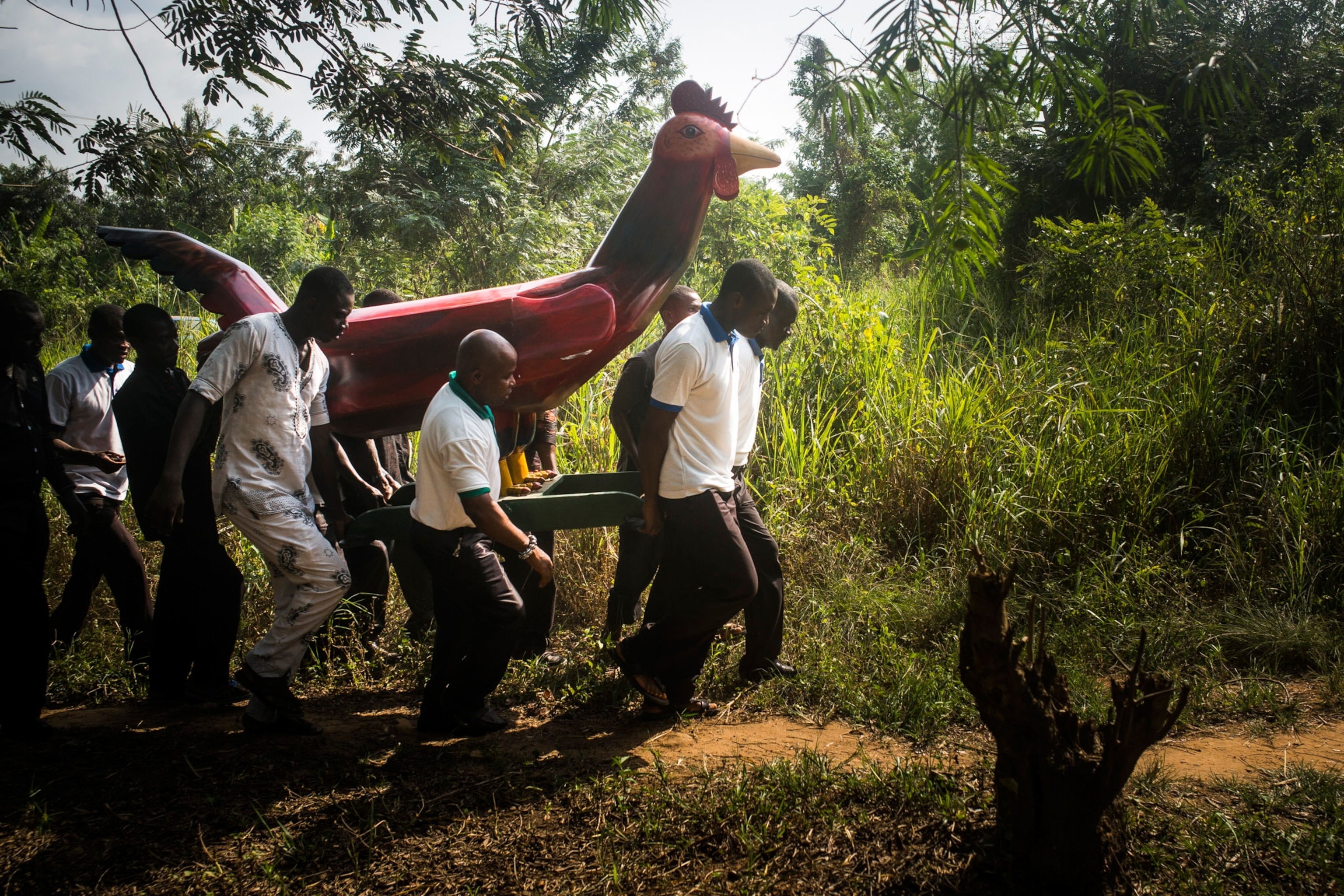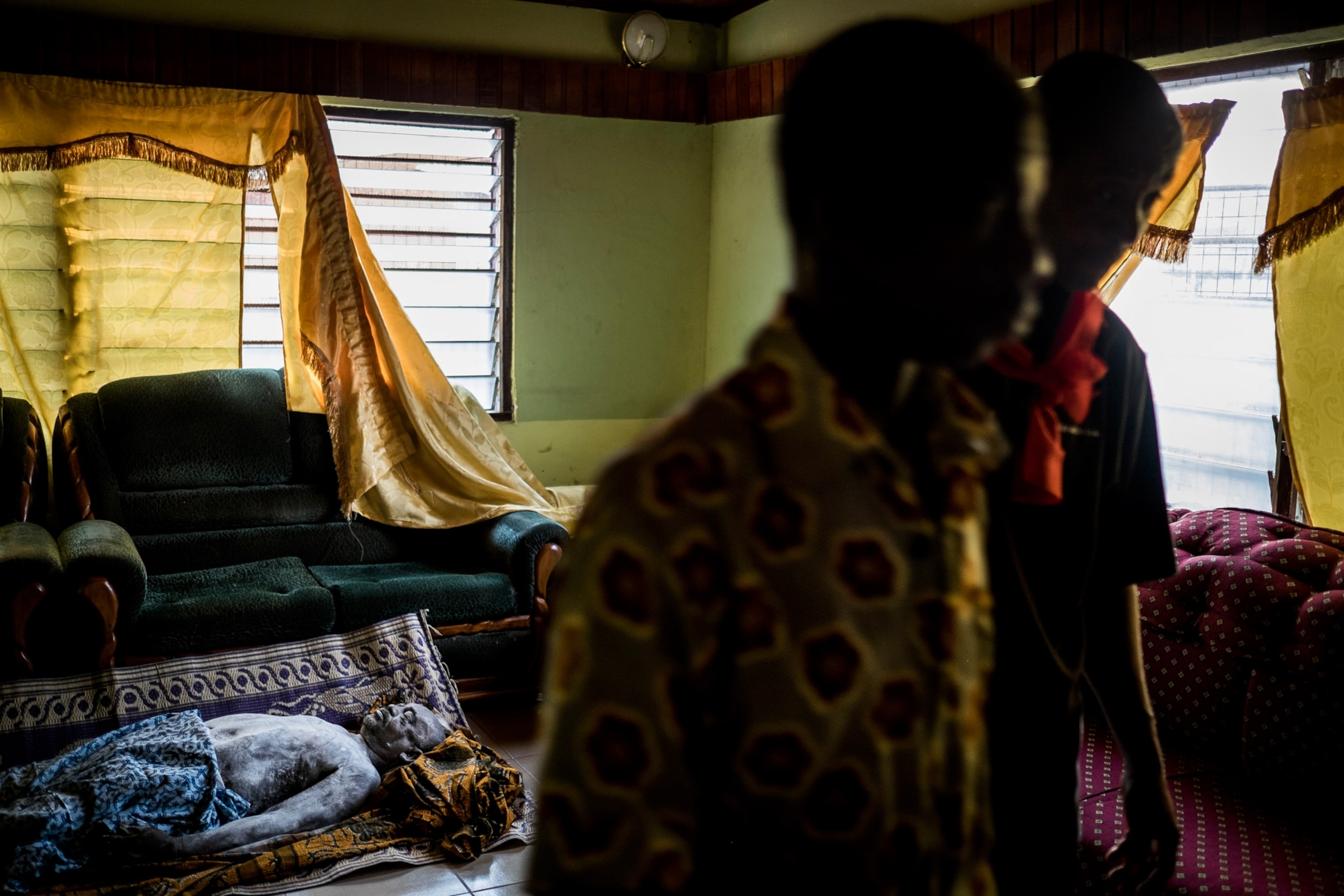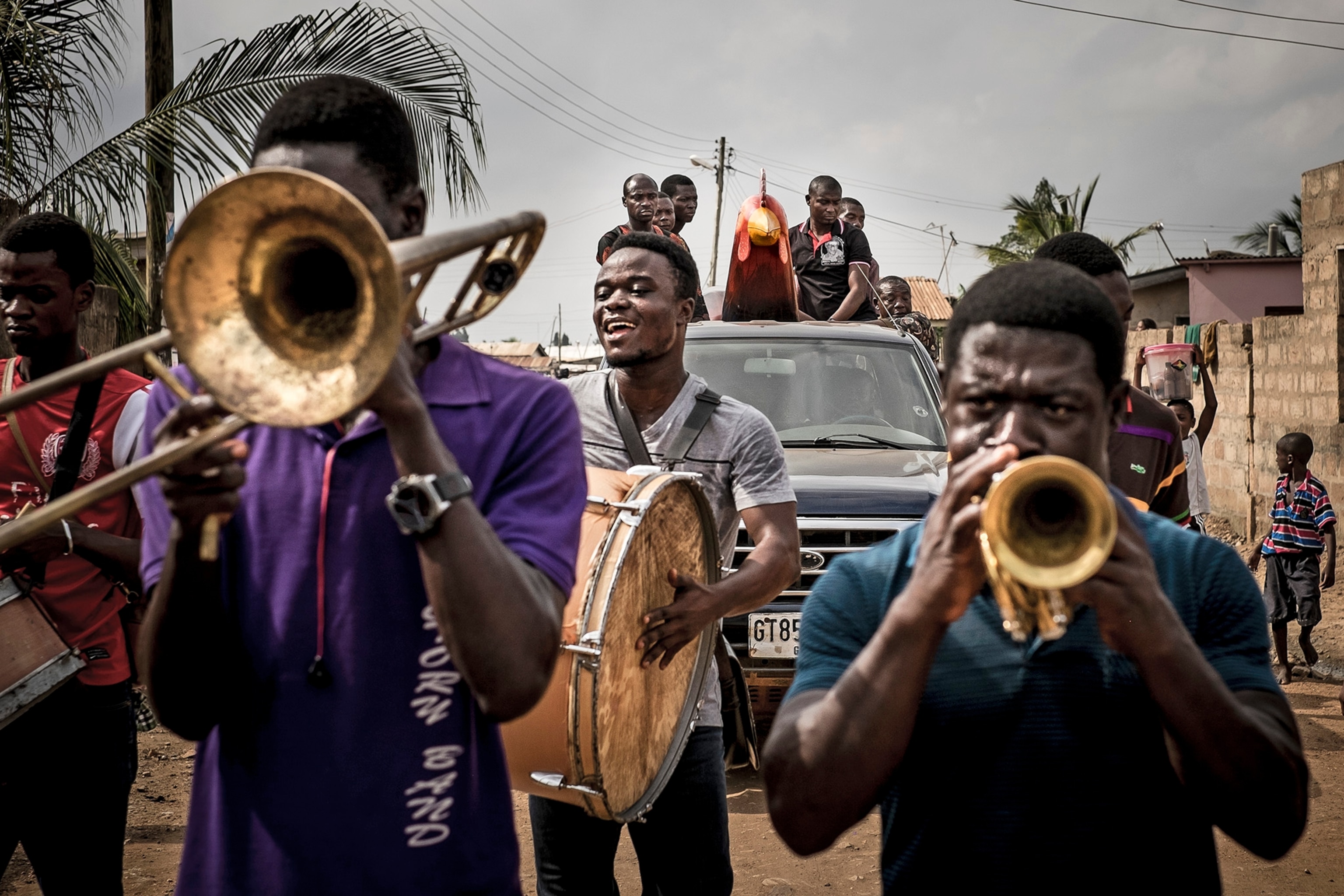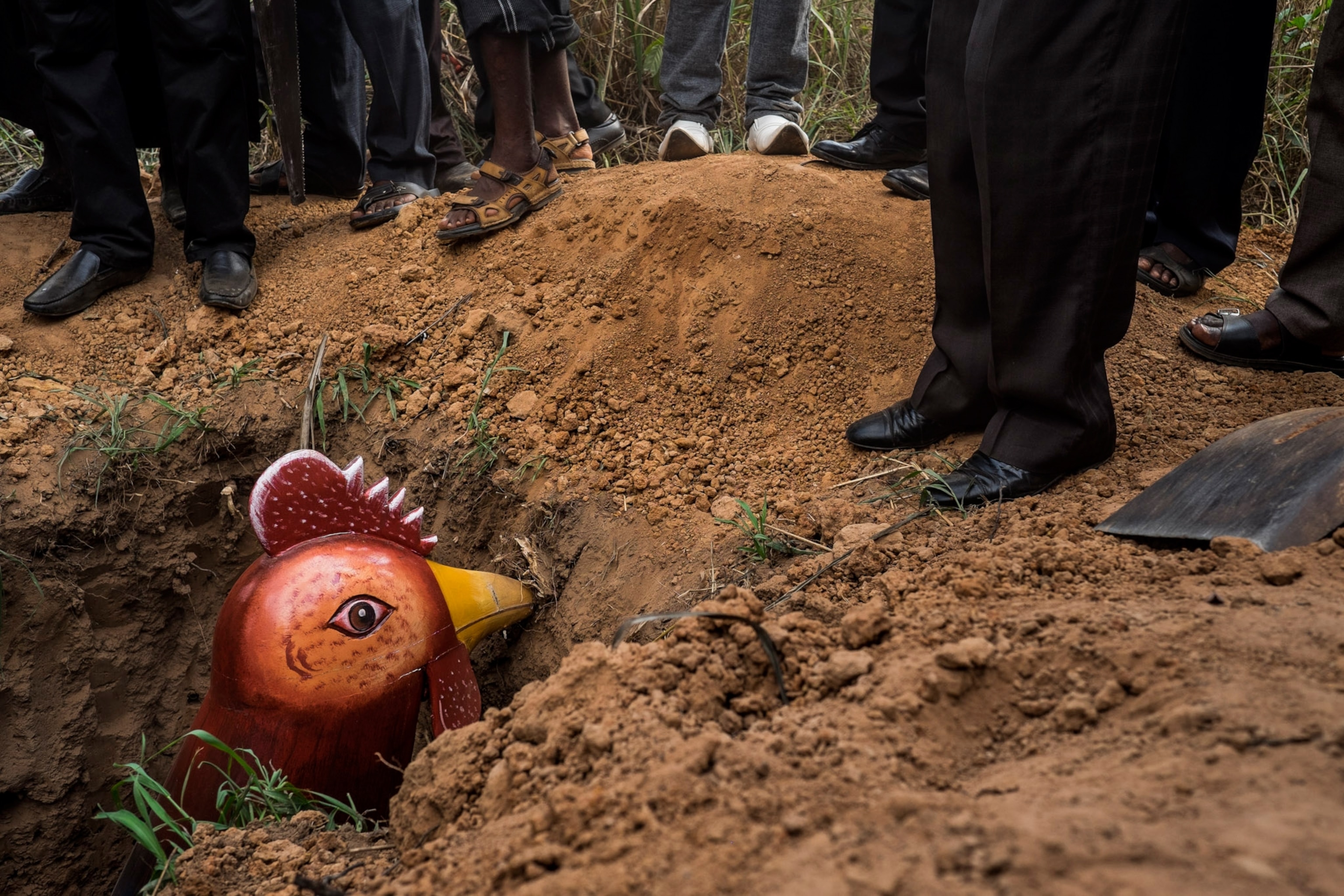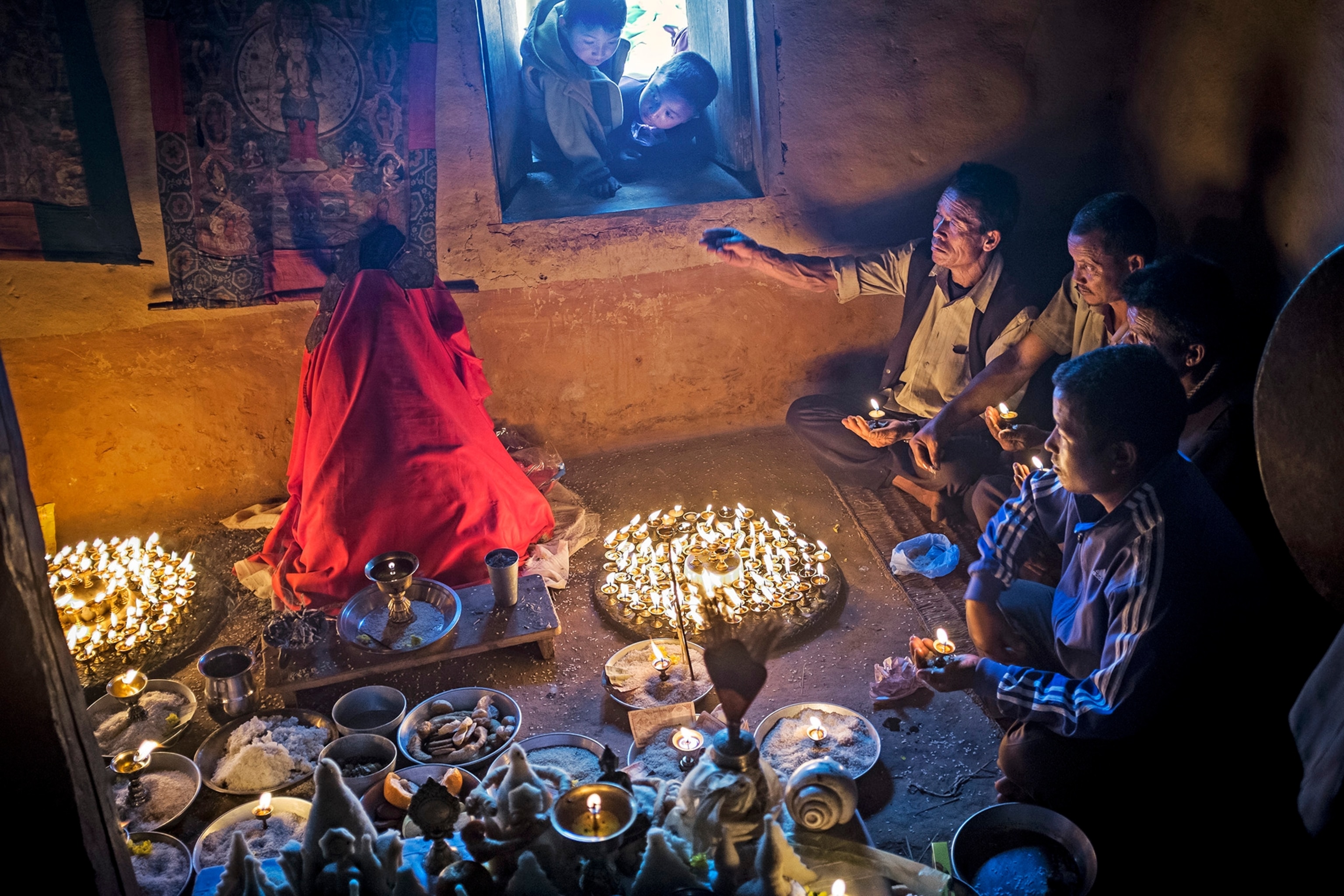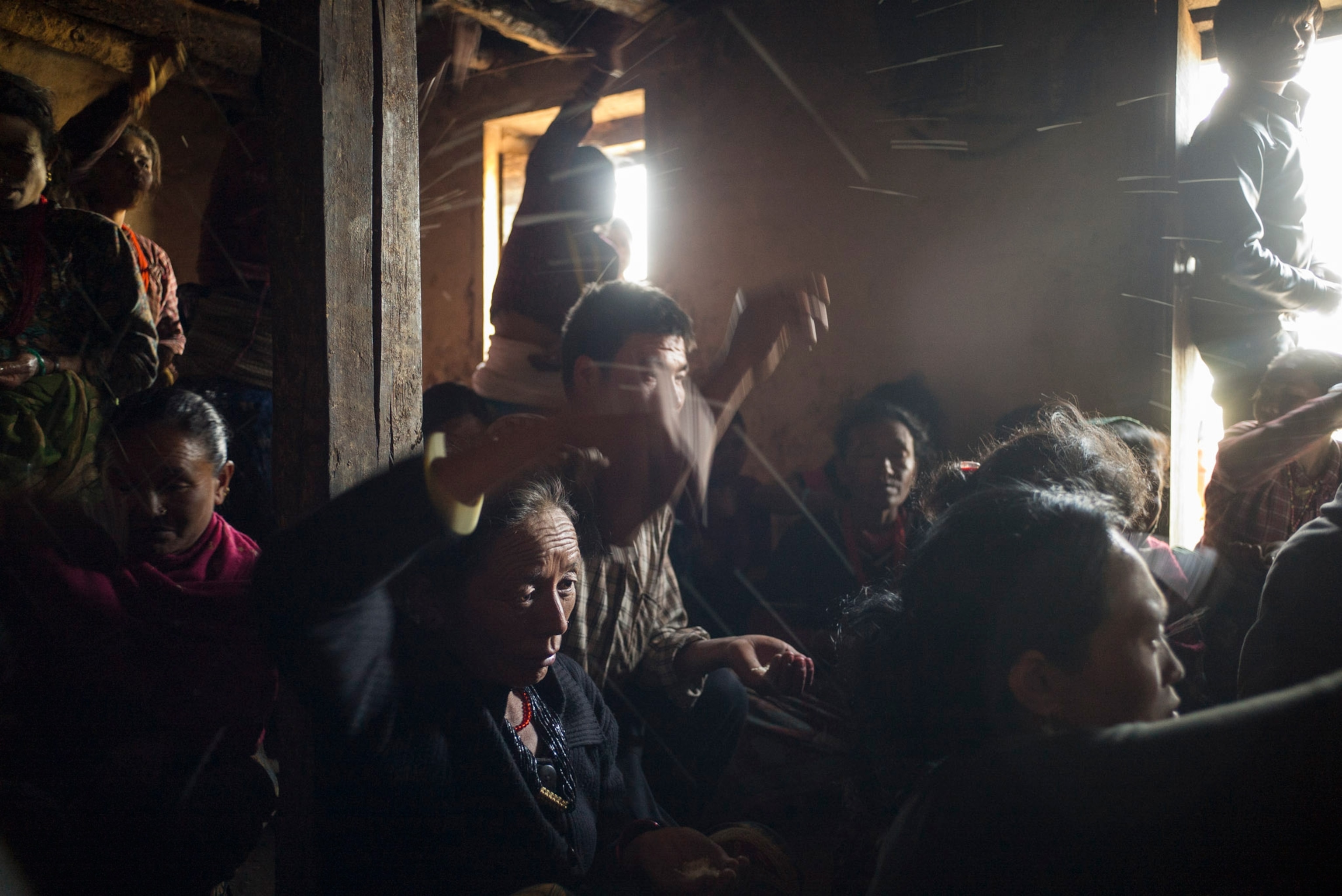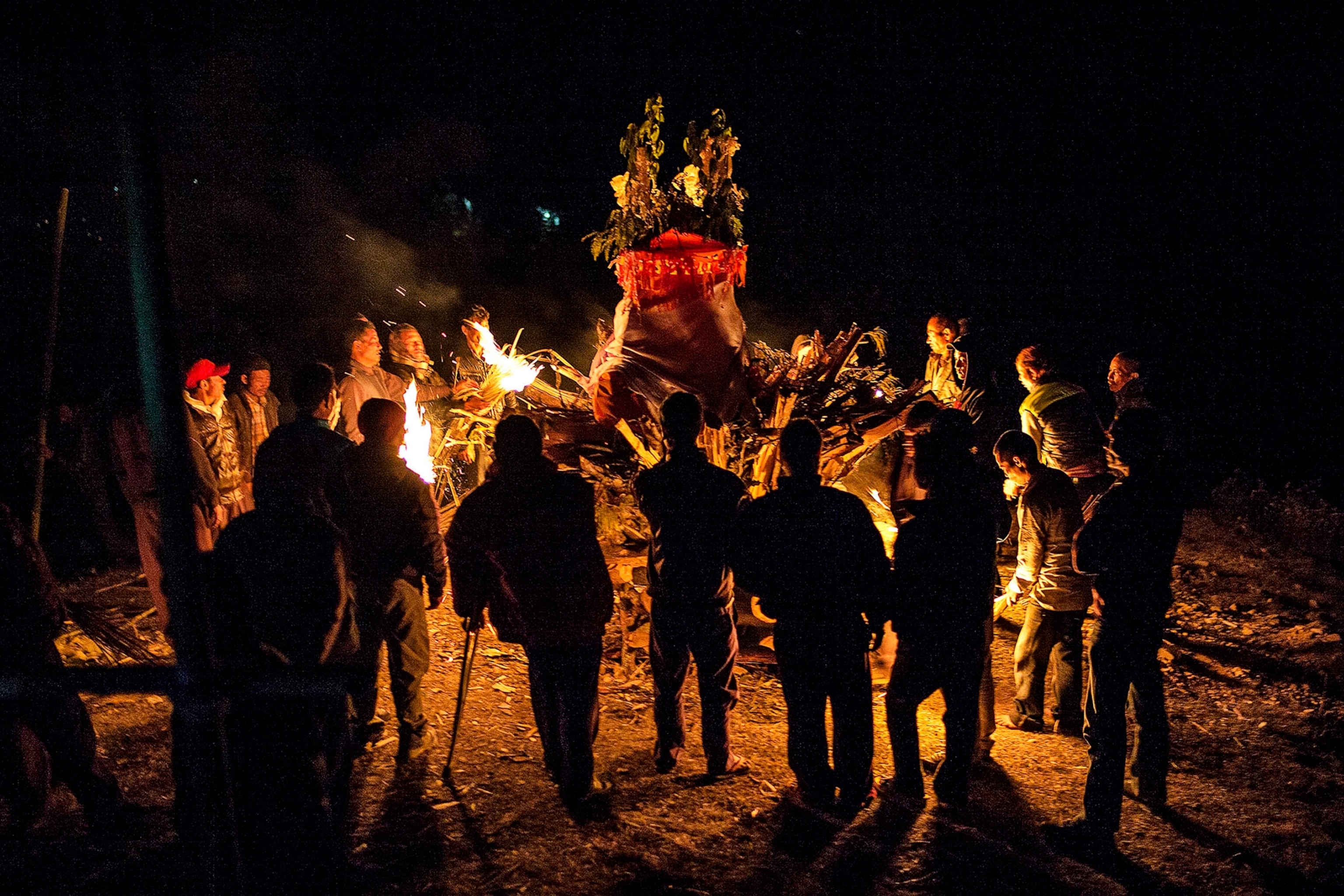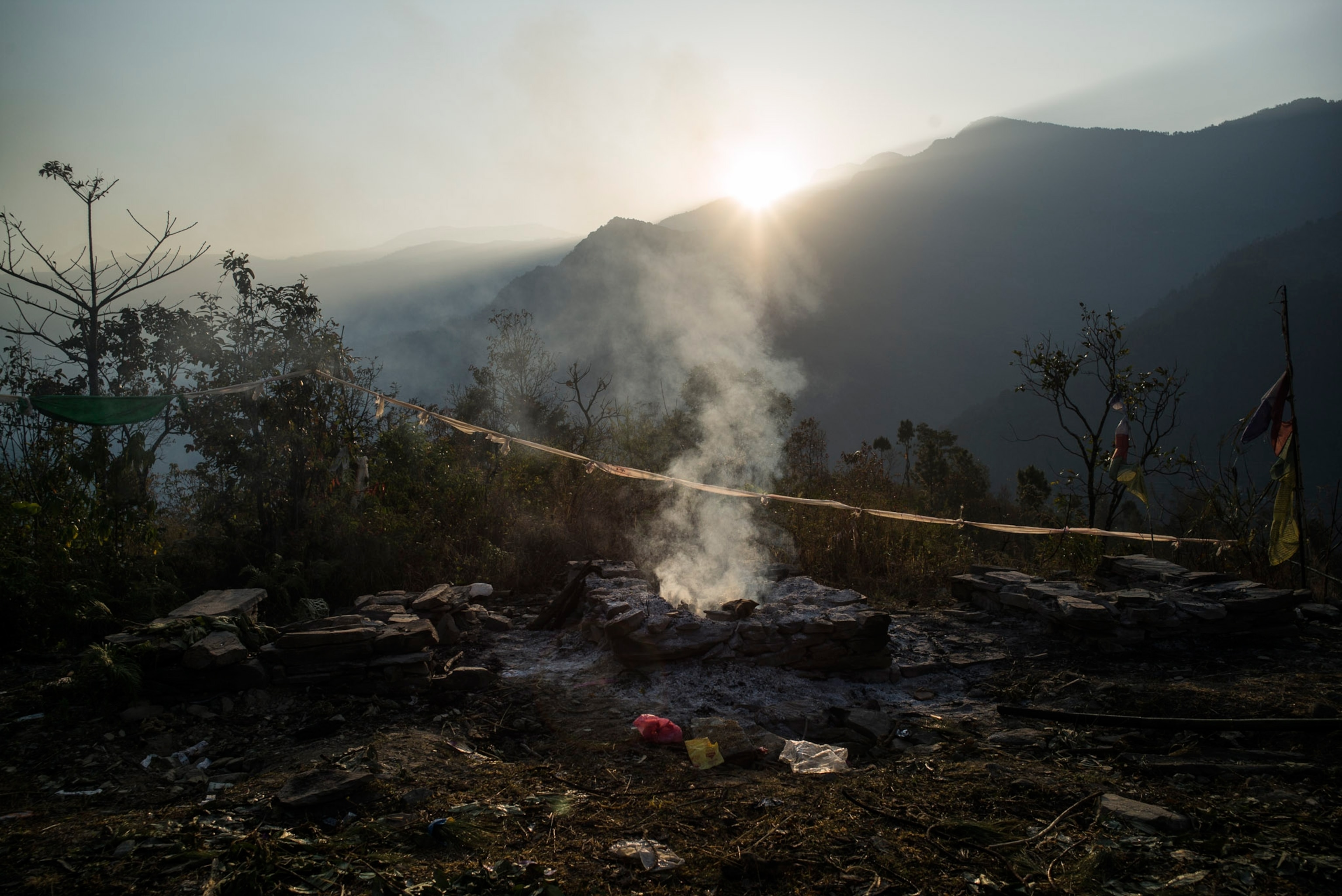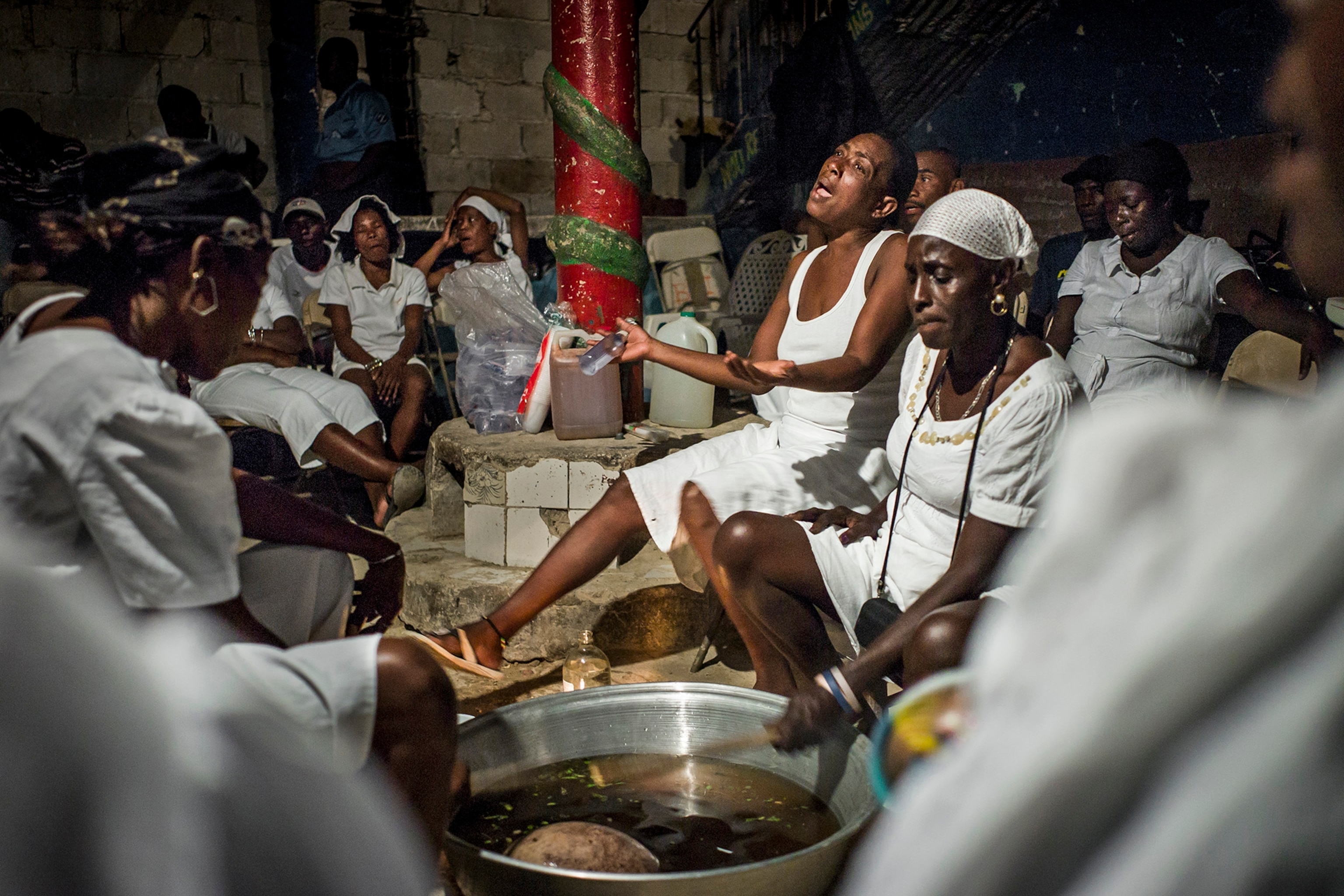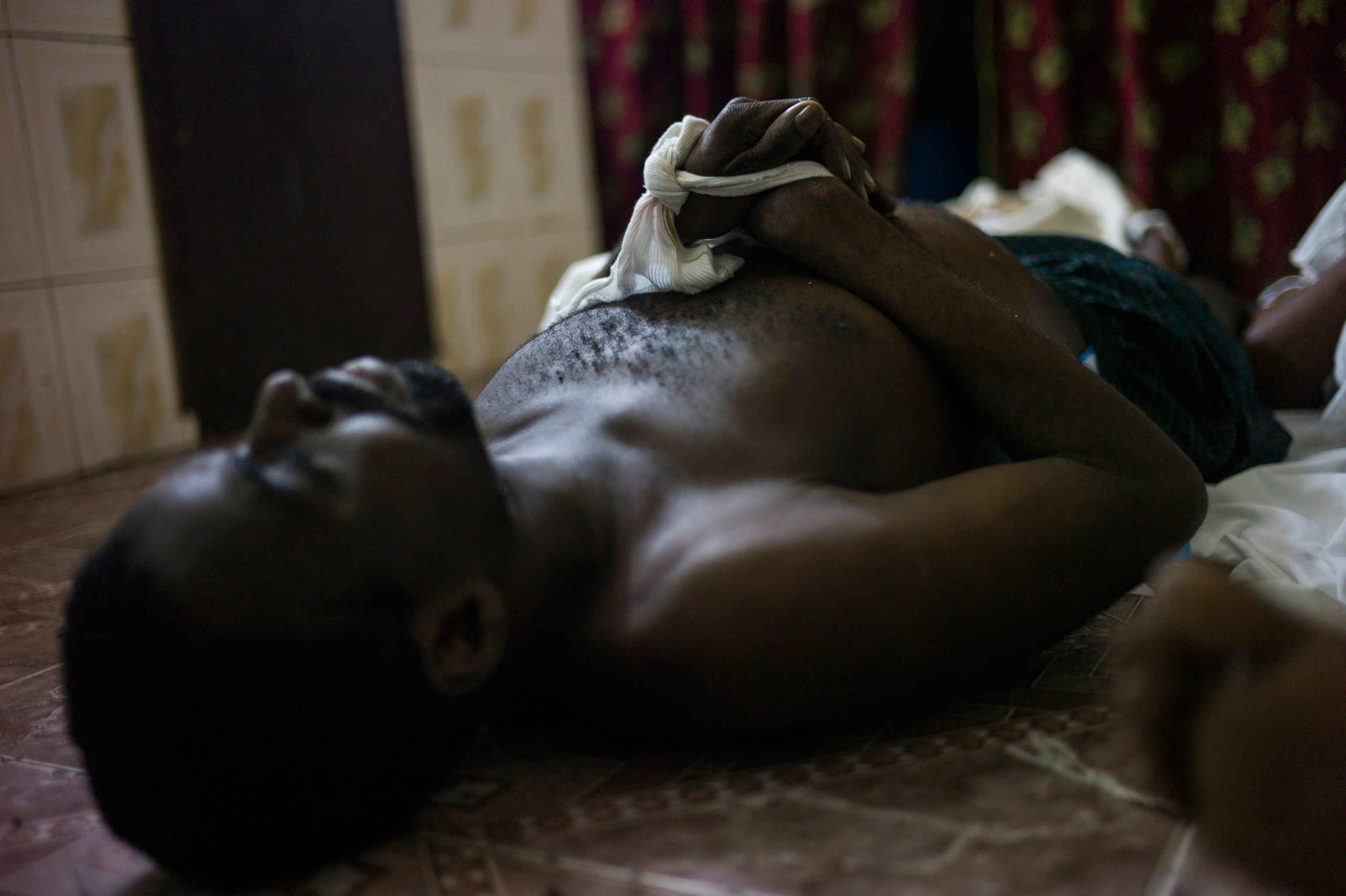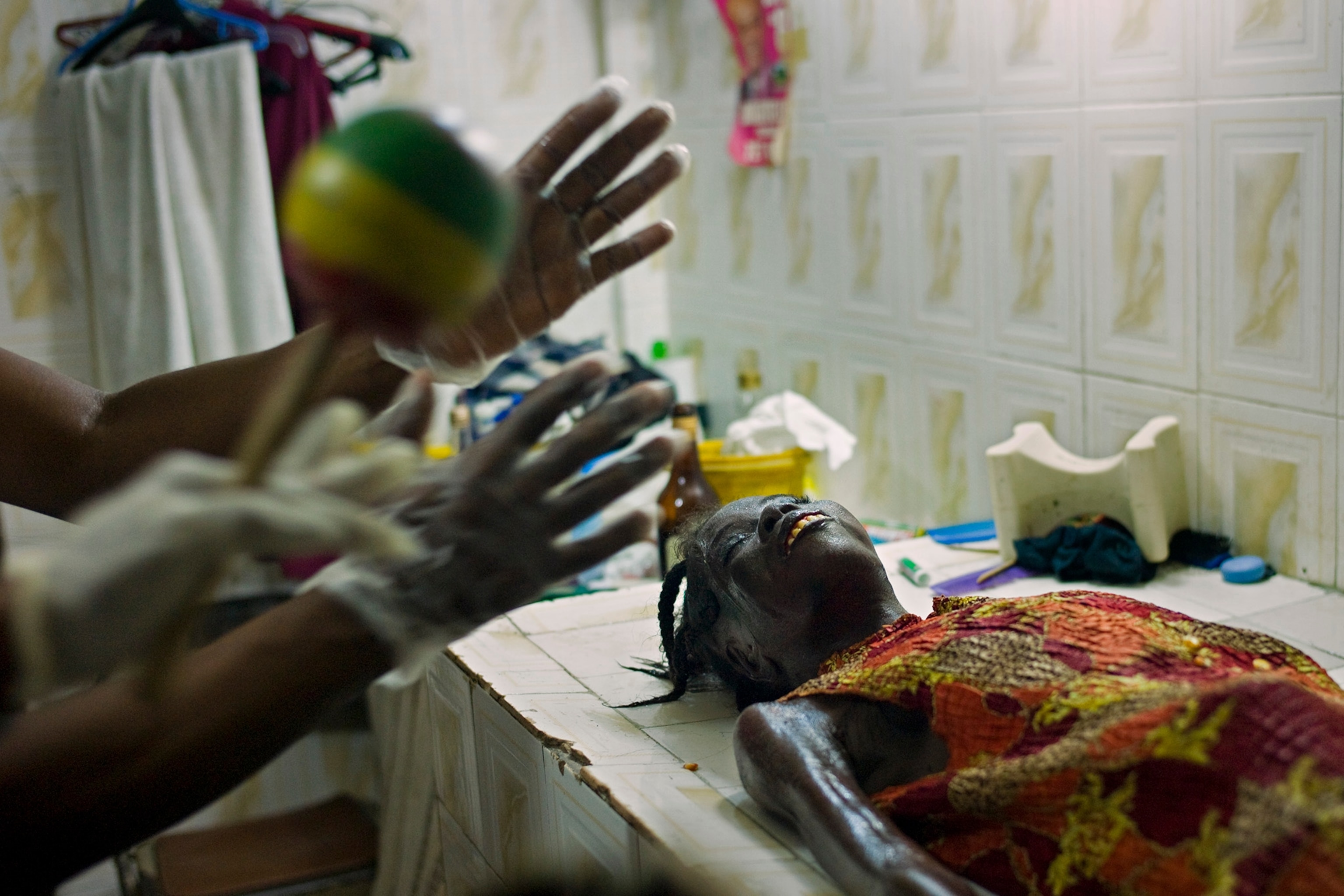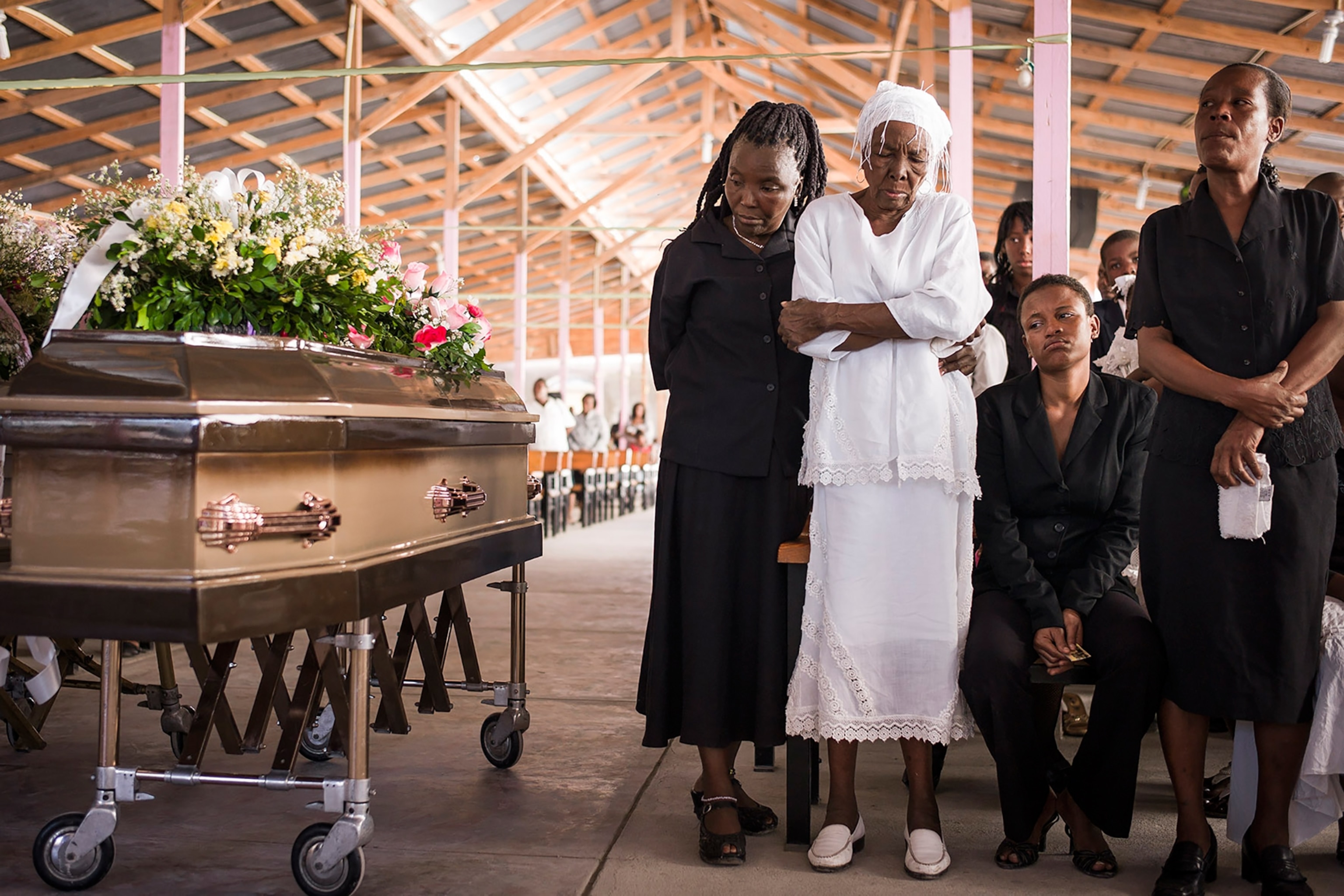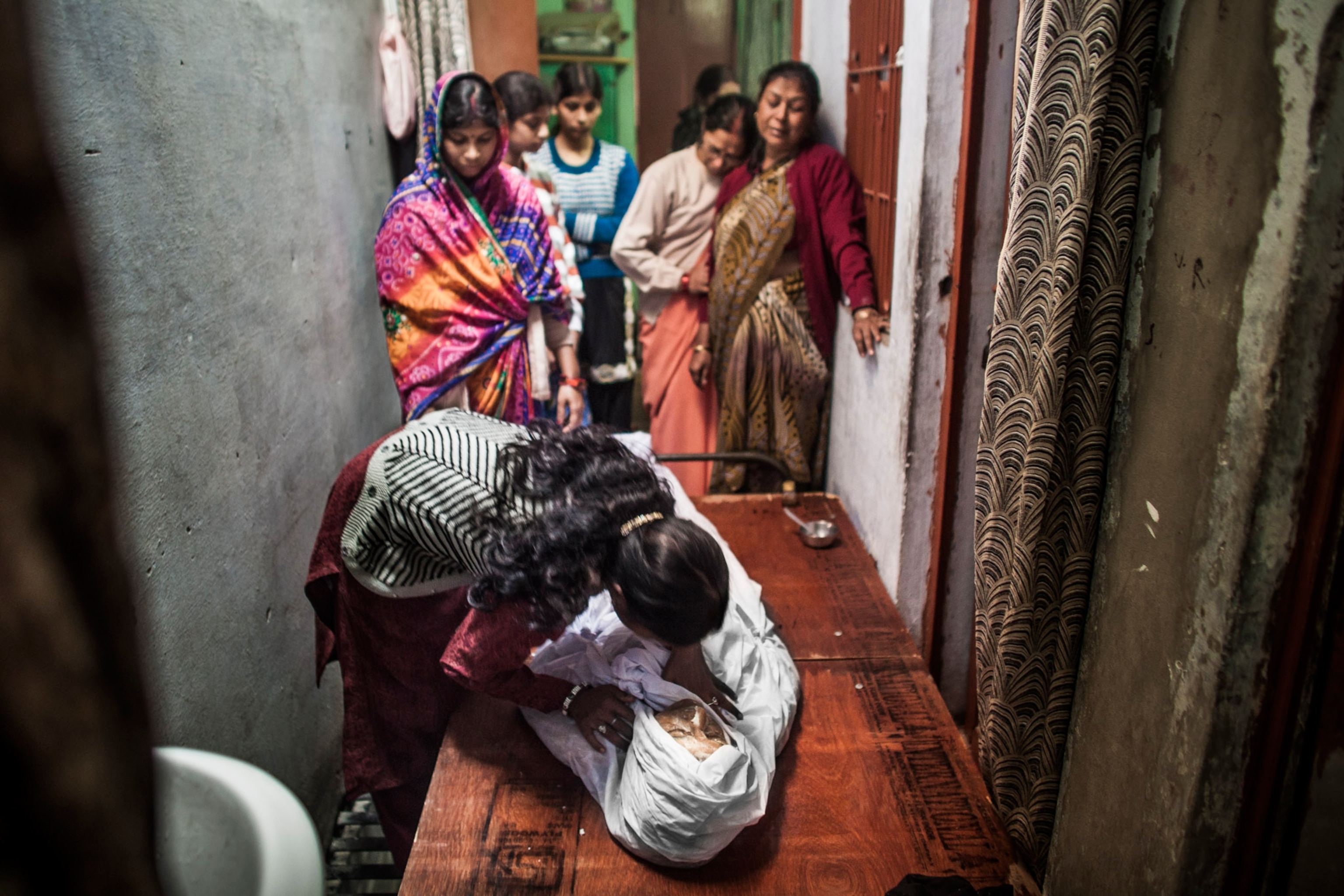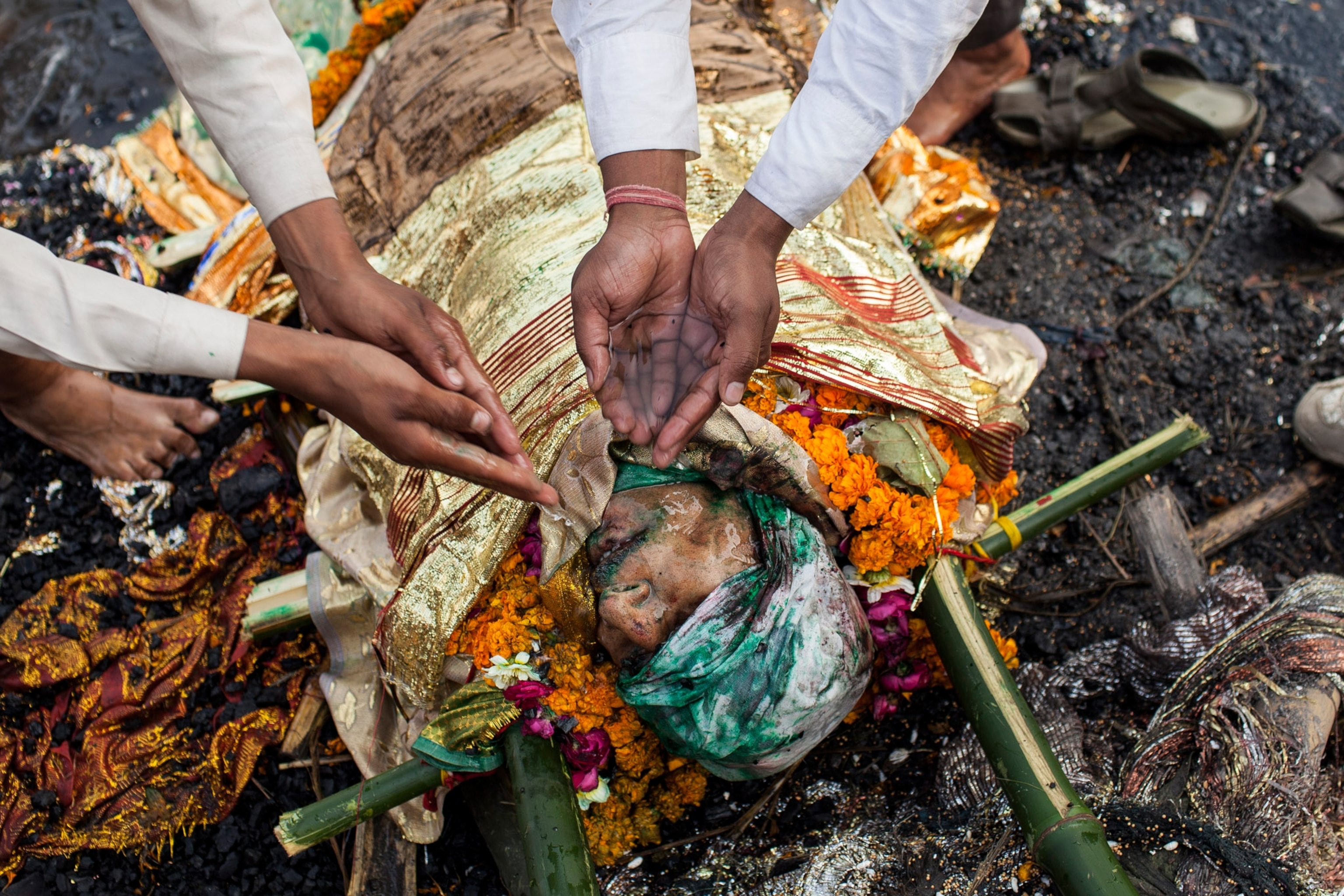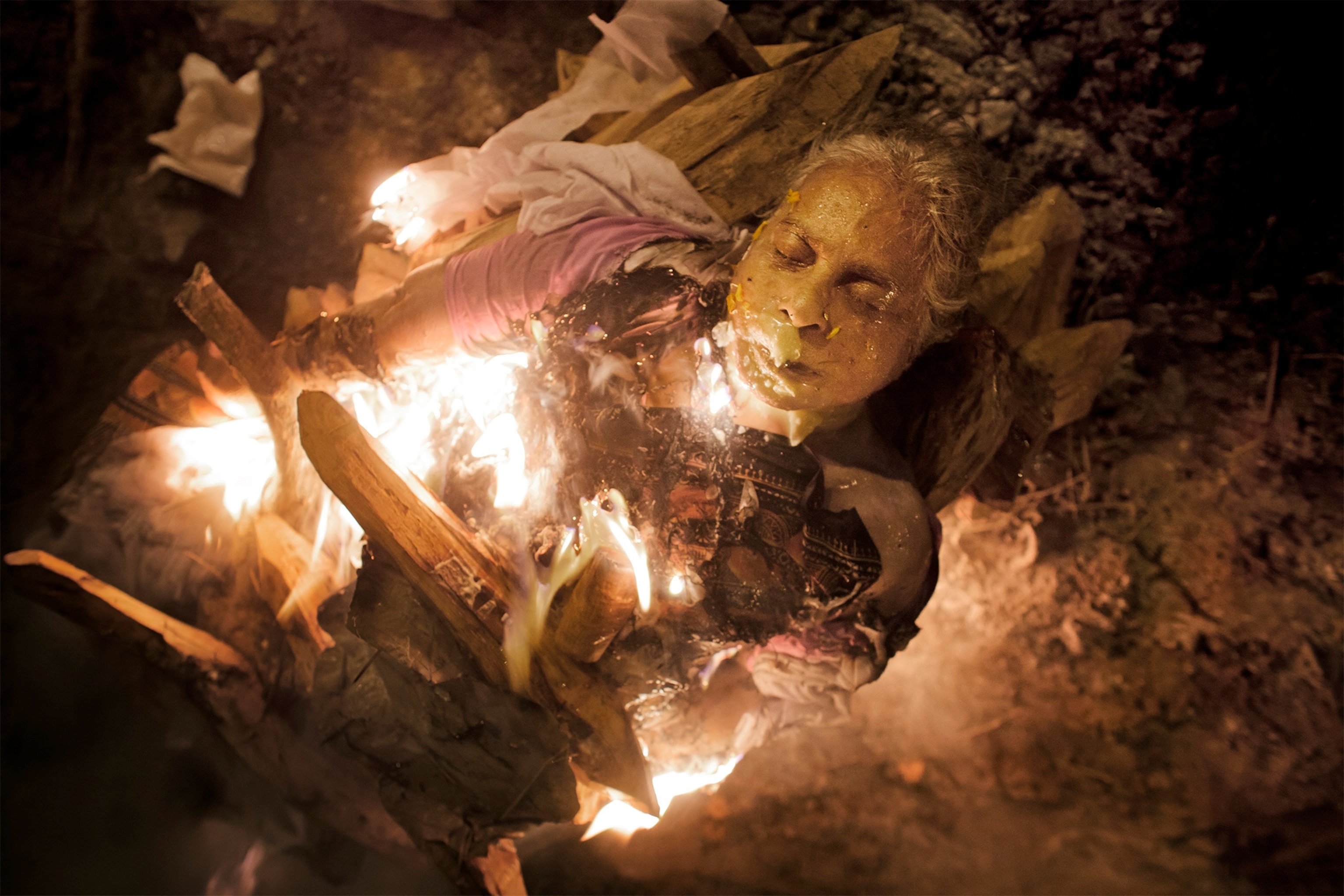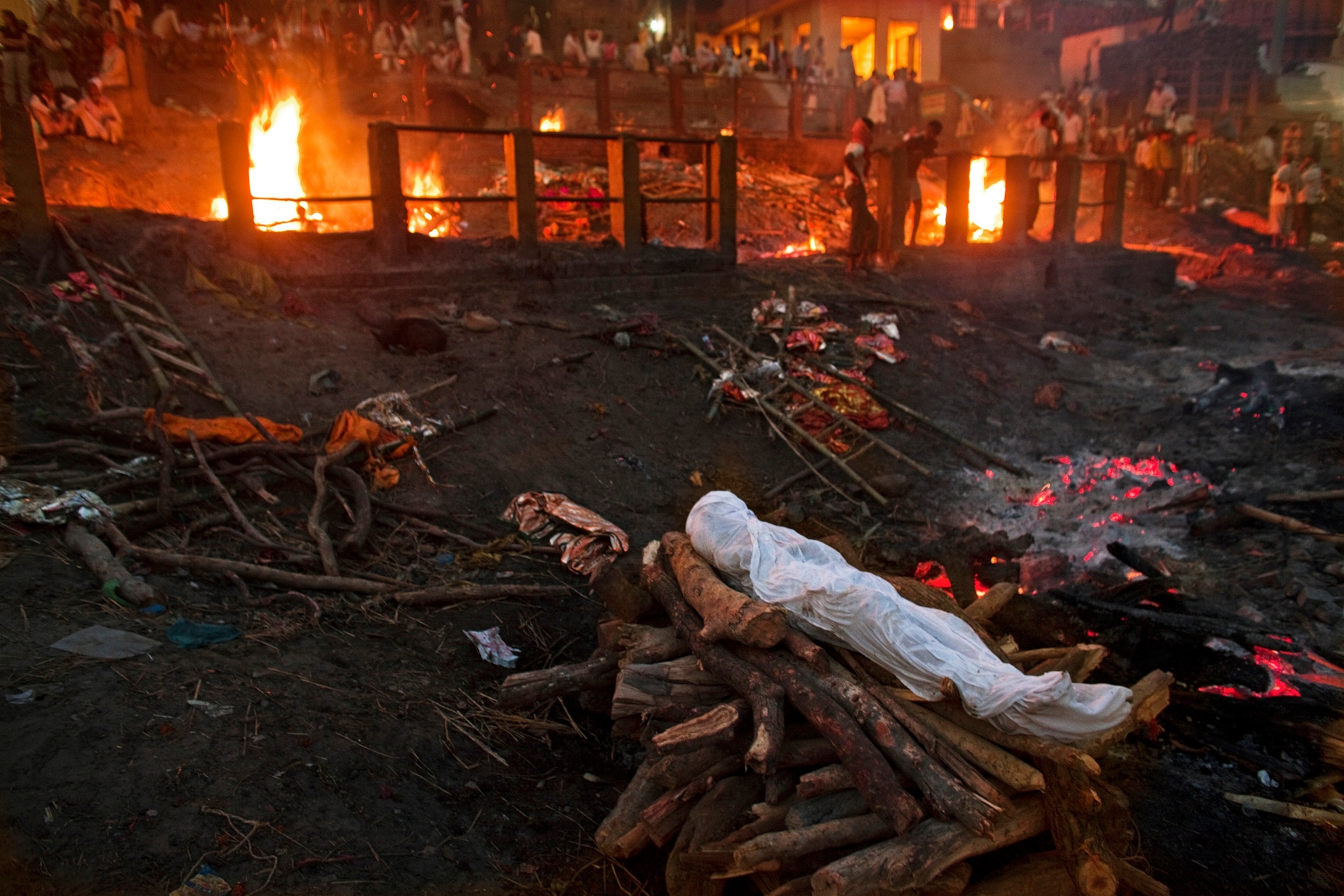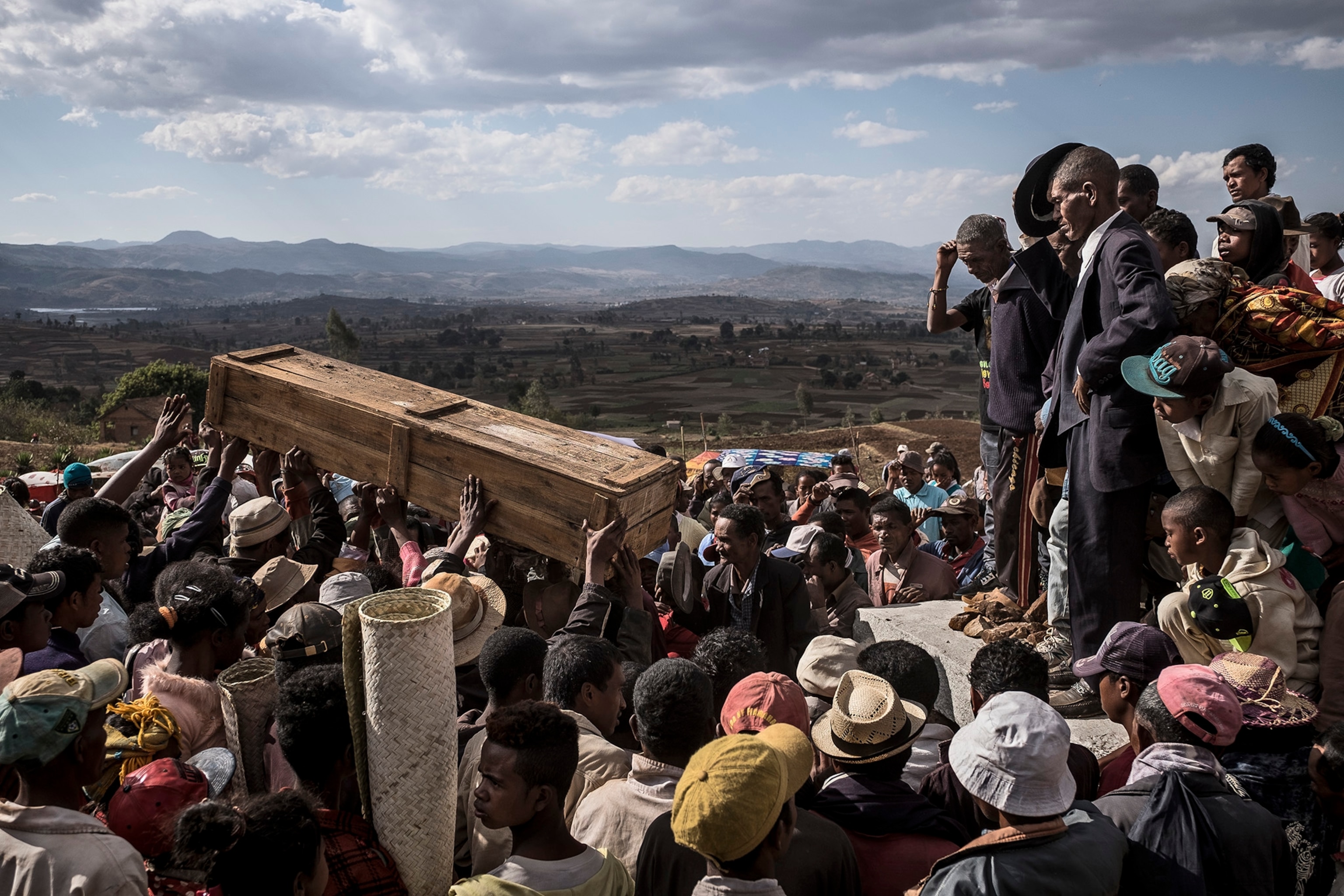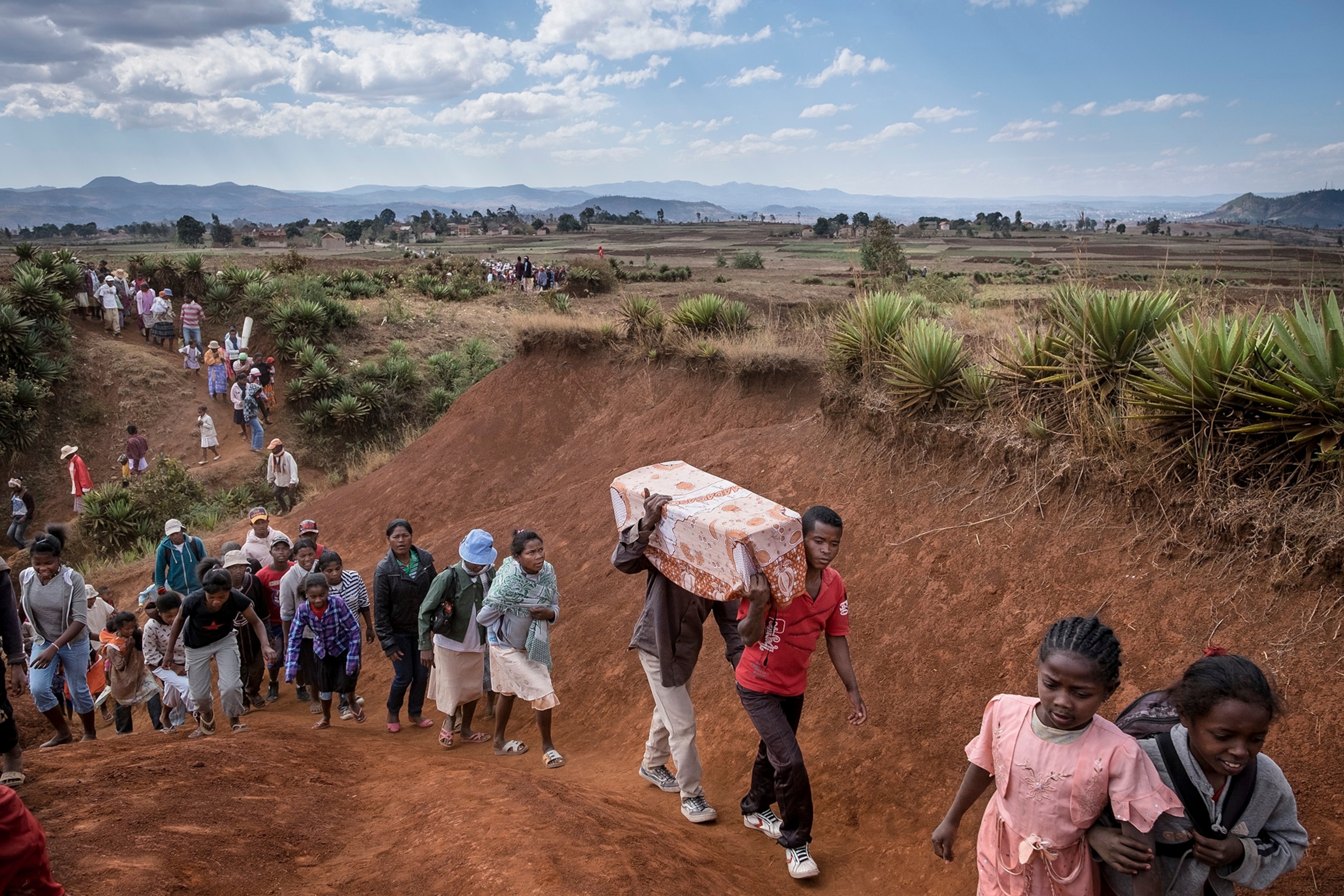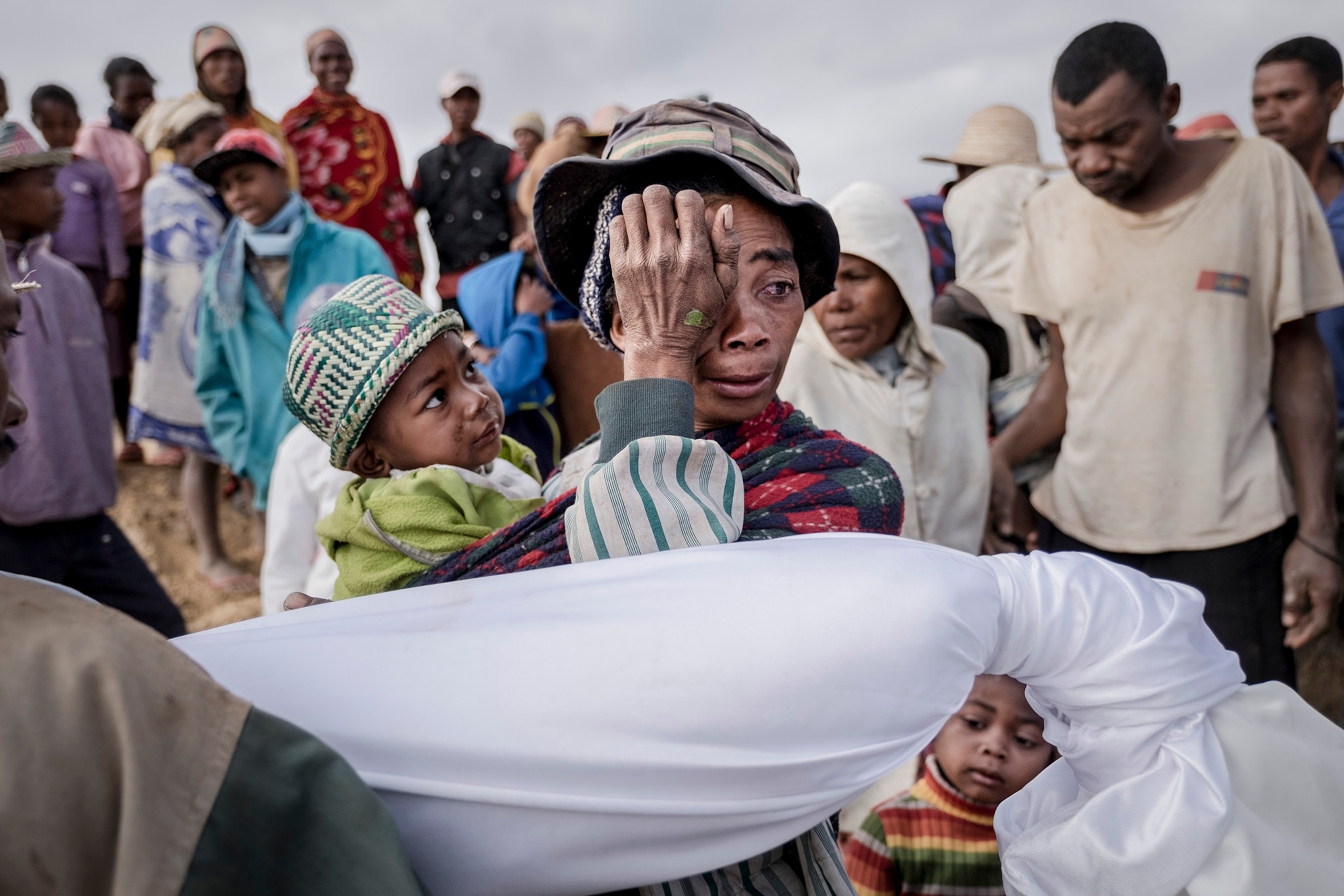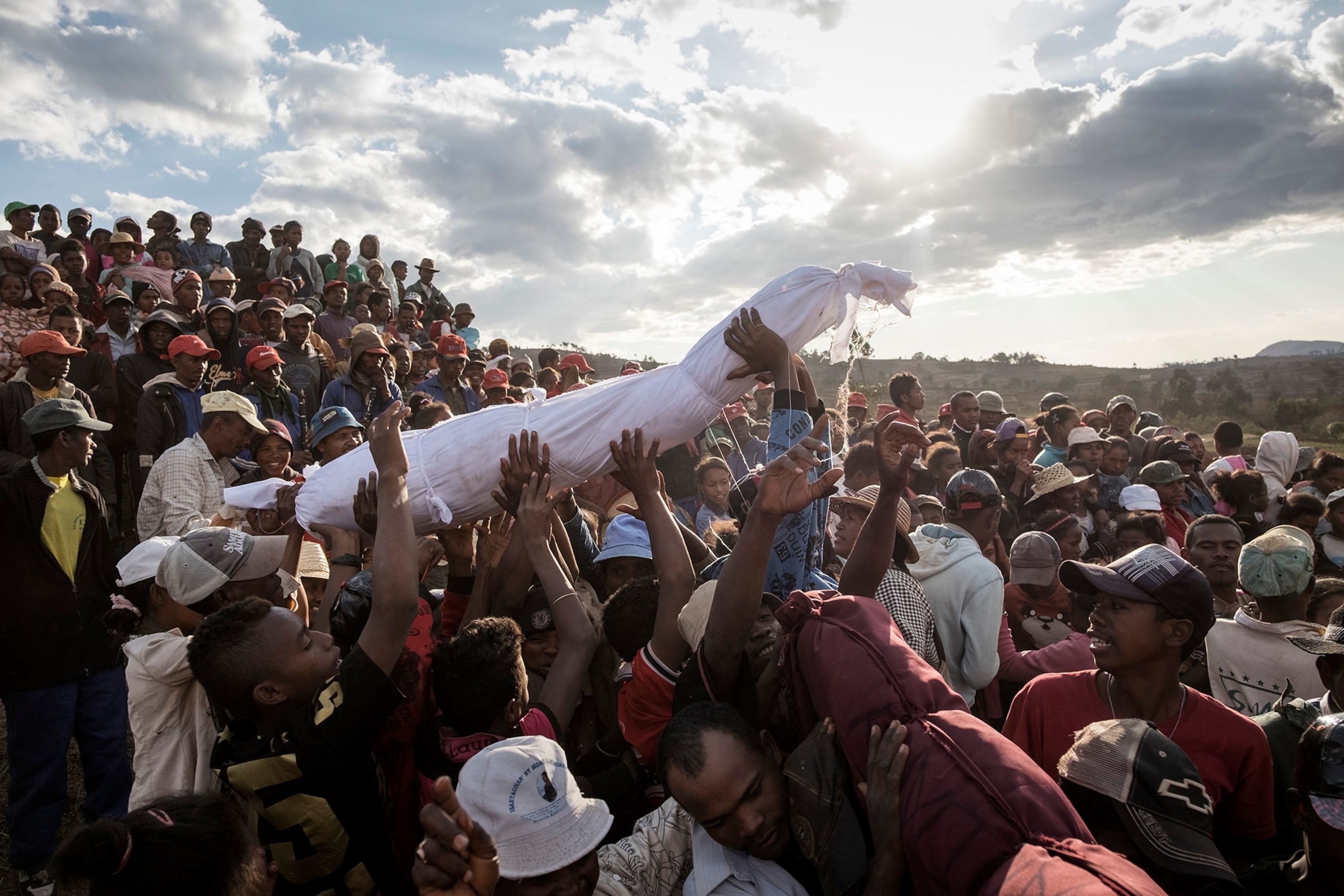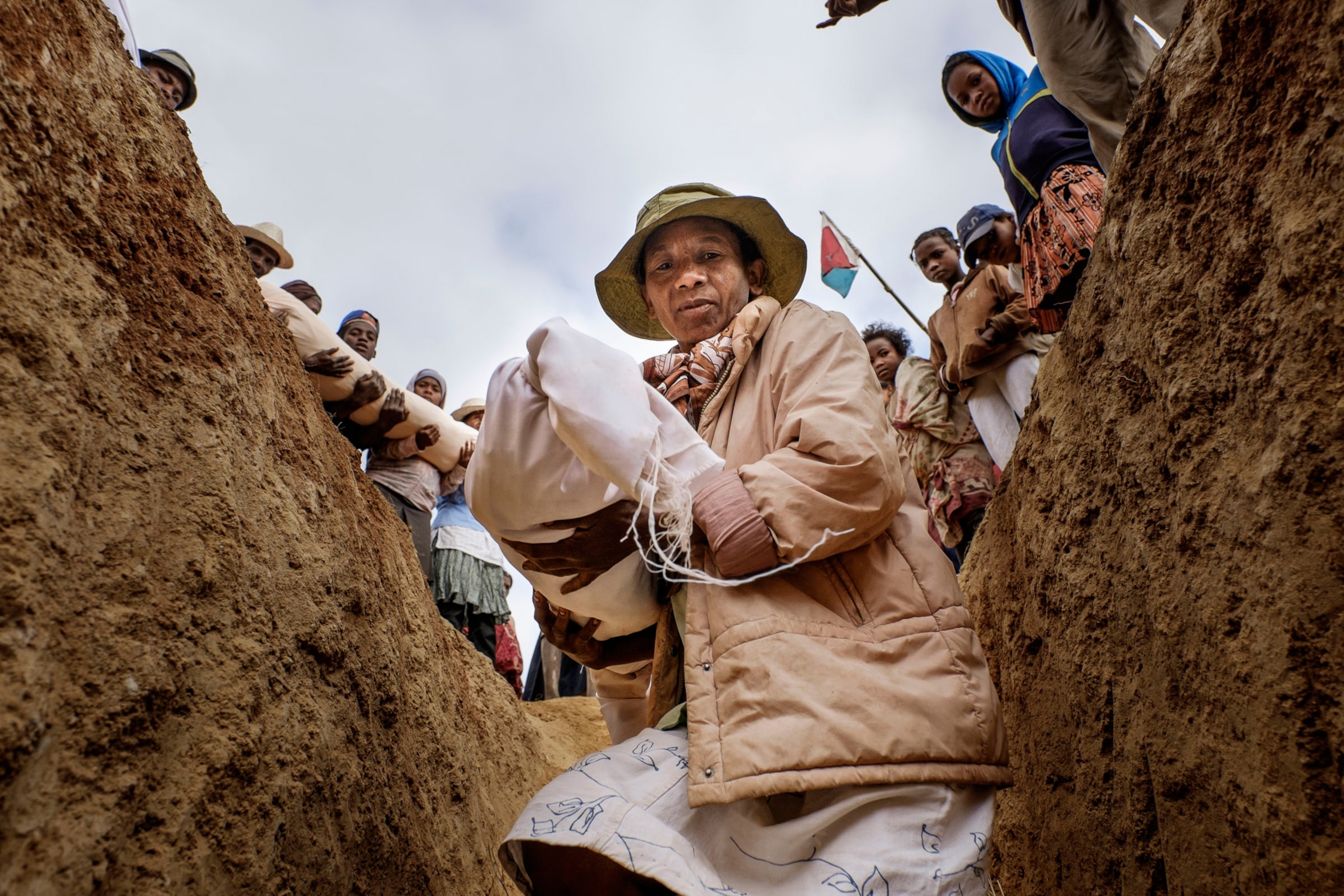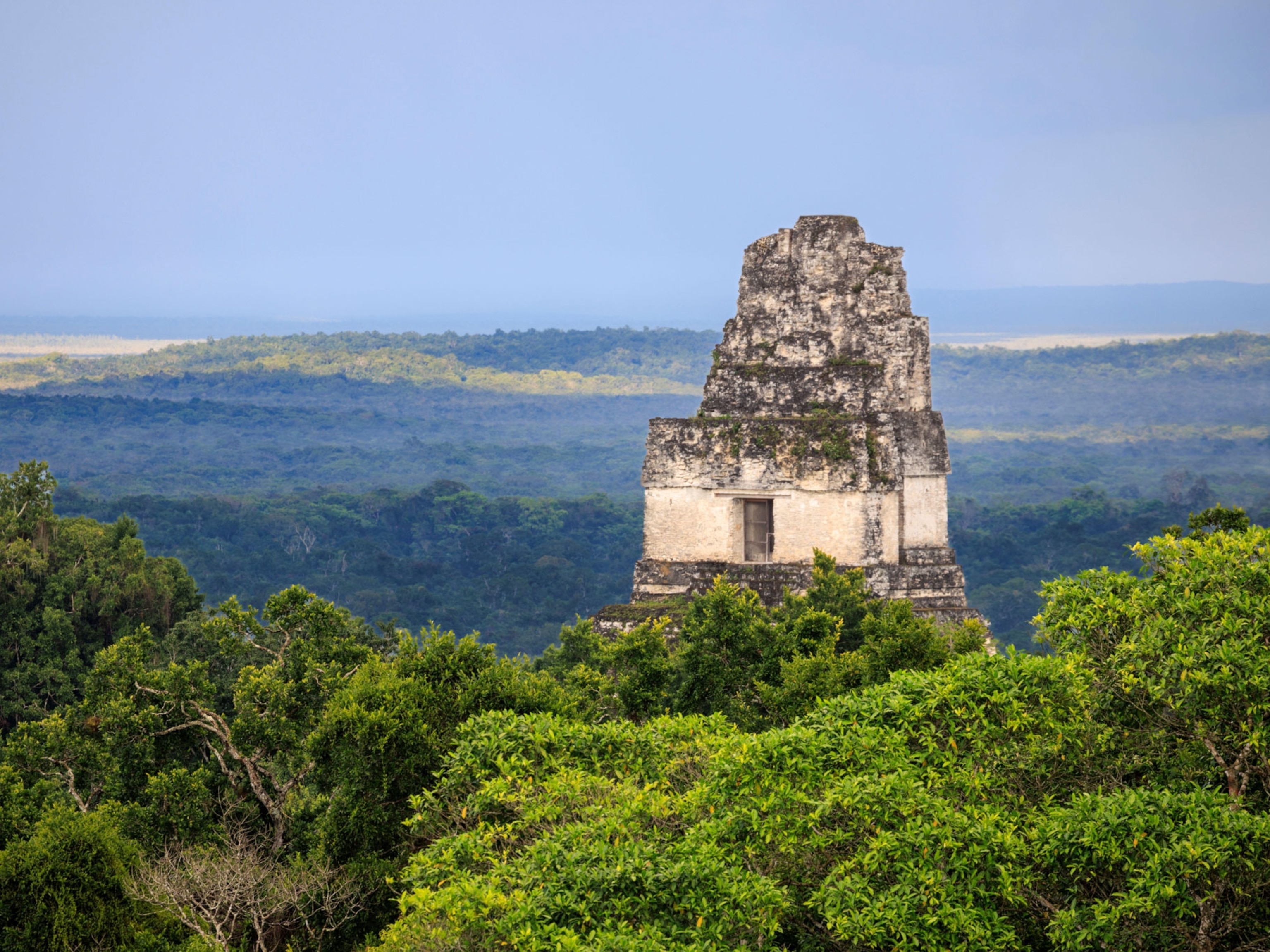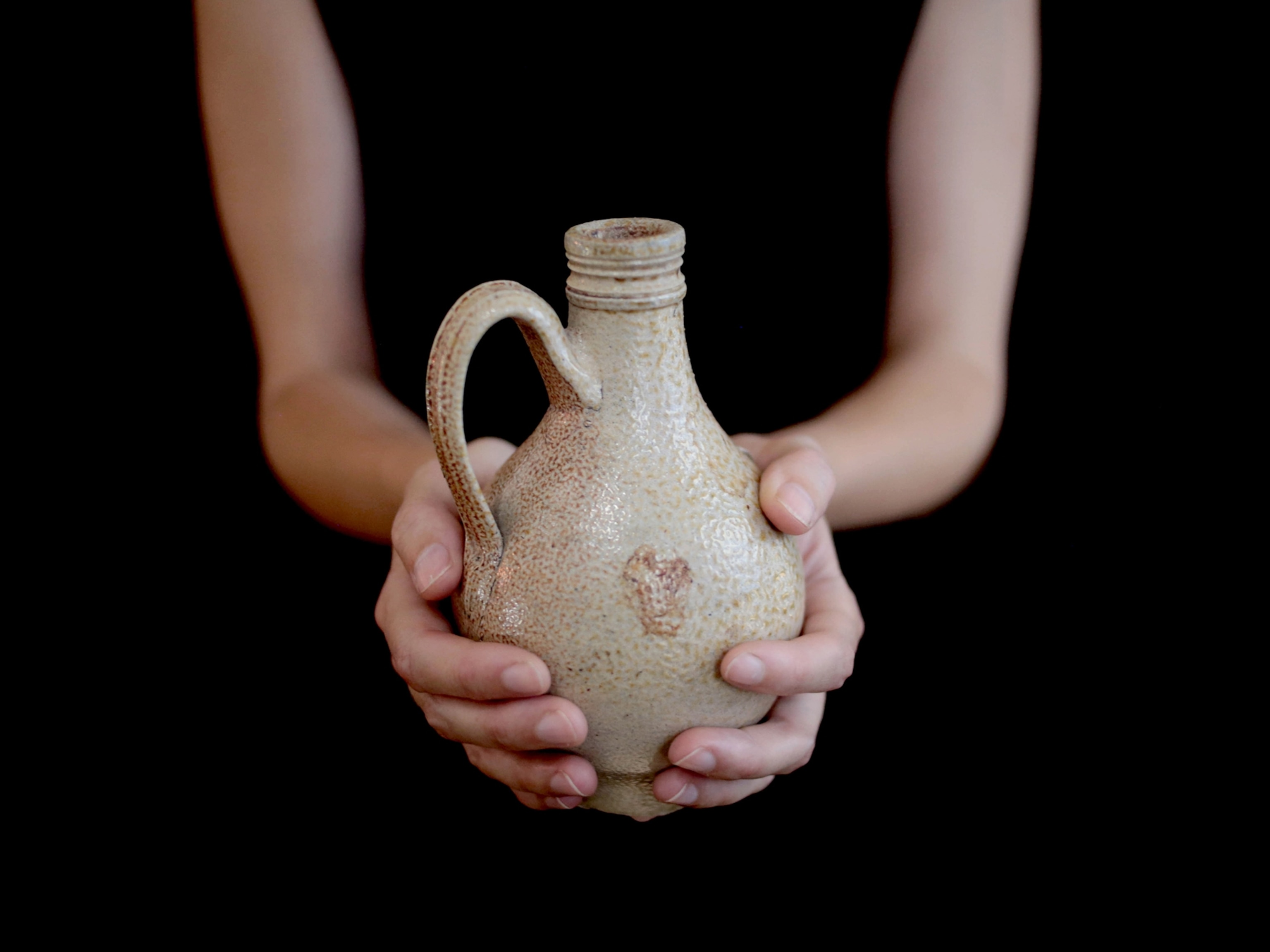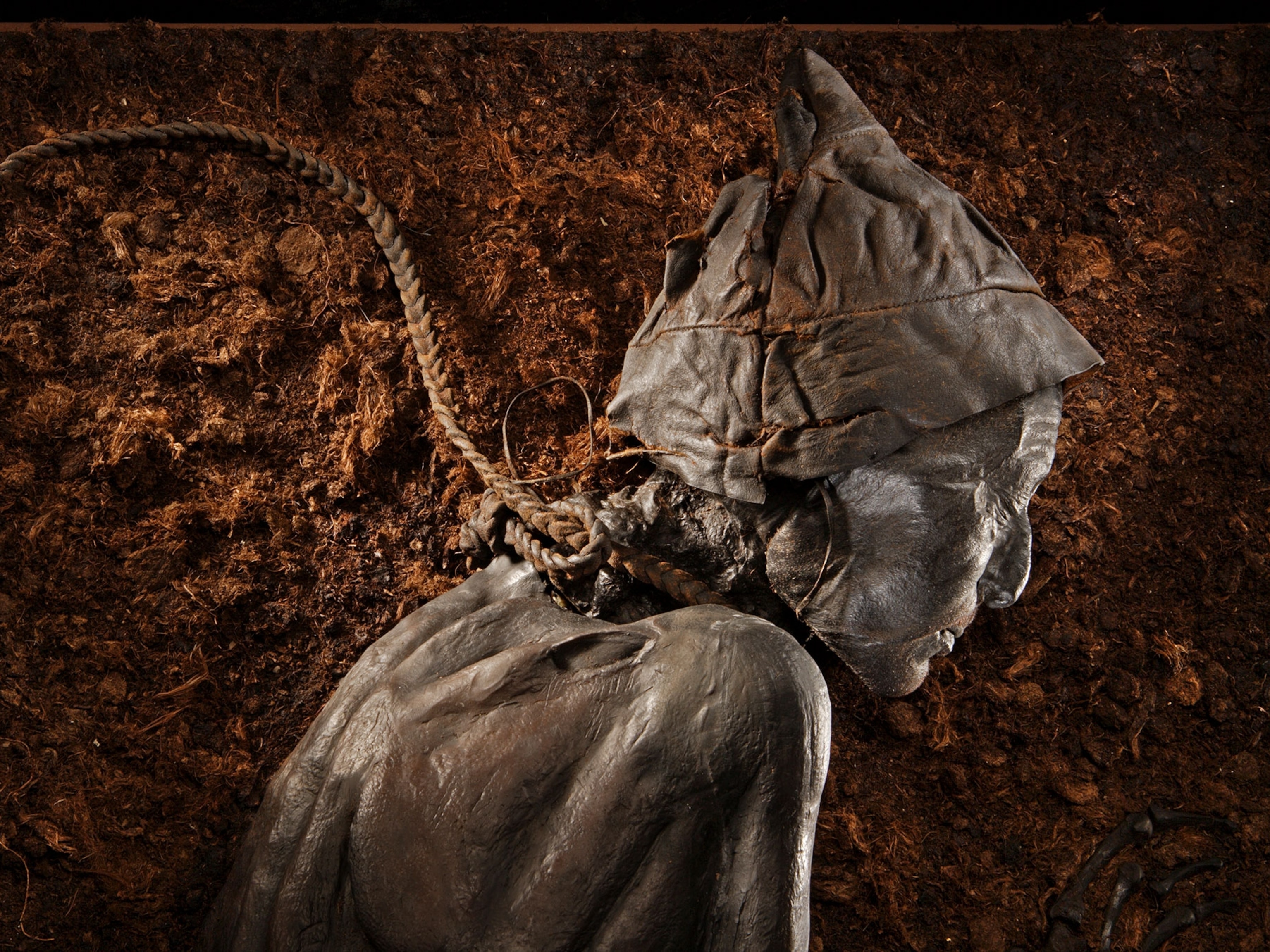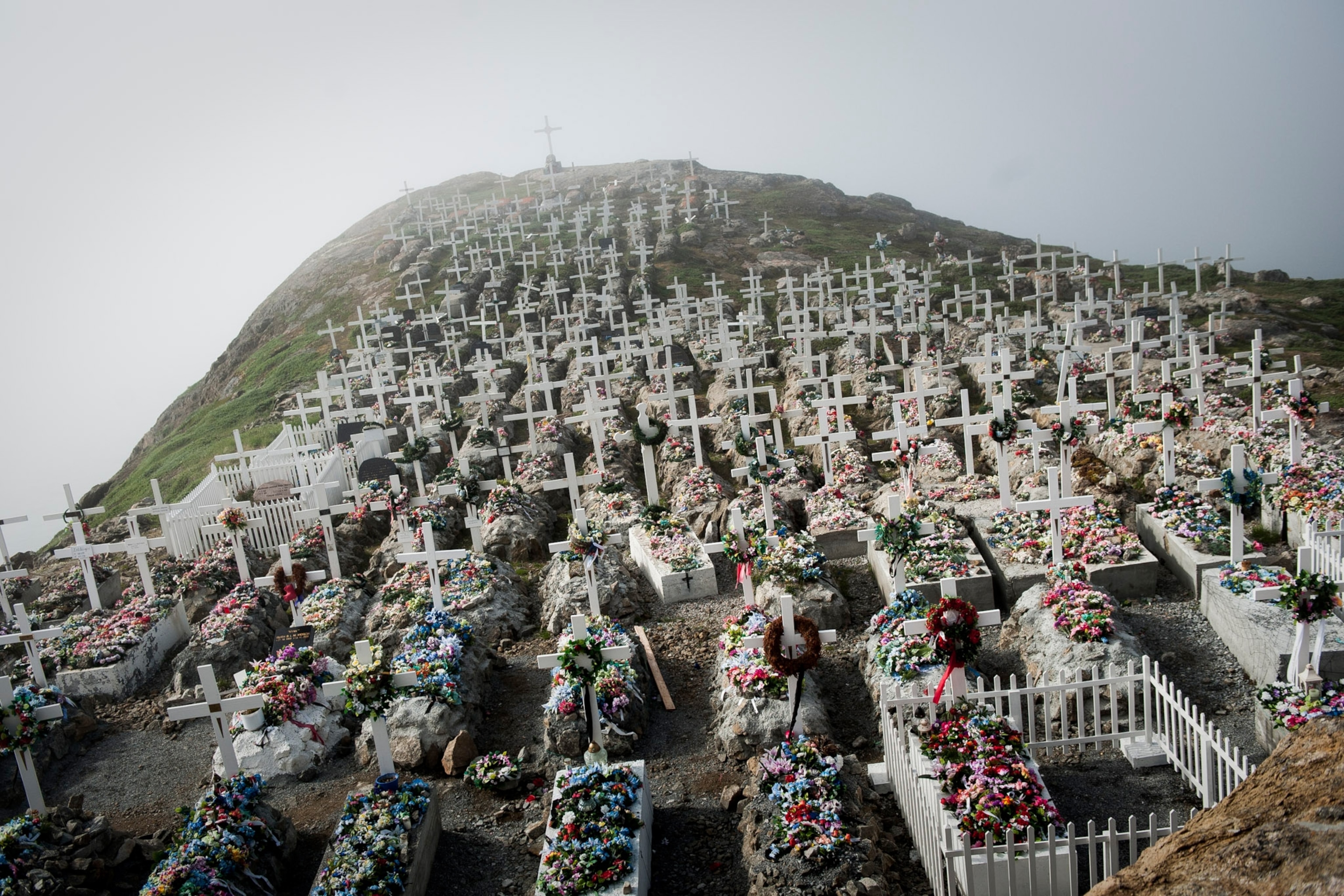
Poignant pictures of death rituals
Around the world, funerals take many forms.
For the past several years, photographer Klaus Bo has documented how different cultures deal with death in his ongoing Dead and Alive Project. His aim is to document at least 15 distinct death rituals, including ones from all five major religions (Islam, Judaism, Christianity, Buddhism, and Hinduism)—a goal he admits will likely take “the rest of my life.”
Bo thinks his work will surprise people by showing them how other cultures deal with death.
“It’s the one thing that we definitely have in common all over the world, that we’re going to die,” he says. Yet although many of the ideas behind death rituals are the same—the desire to honor a dead person’s life, or give them a safe passage to the other side—the specific practices and beliefs that go along with them vary incredibly by region and religion.
These photos take you to death rituals around the world: to Ghana, where a poultry farmer is buried in a casket that looks like a chicken; to Haiti, where a dead priestess’ spirit is called out of her body; and to Madagascar, where bodies are taken out of their graves every seven years.
Ghana
Nepal
Haiti
India
Madagascar
Susanne Sayers, Merete Dalberg, Emmanuel Delone (Haiti), Bishwas Asitis and Arun Karki (Nepal), John Owoo and Eric Adjetey Anang (Ghana), Andry Andrianaivo (Madagascar) and Pia Flores (Guatemala) contributed to this report.
